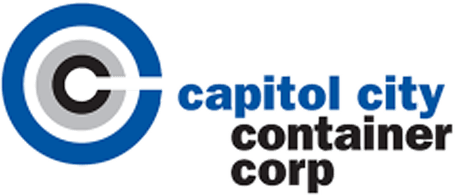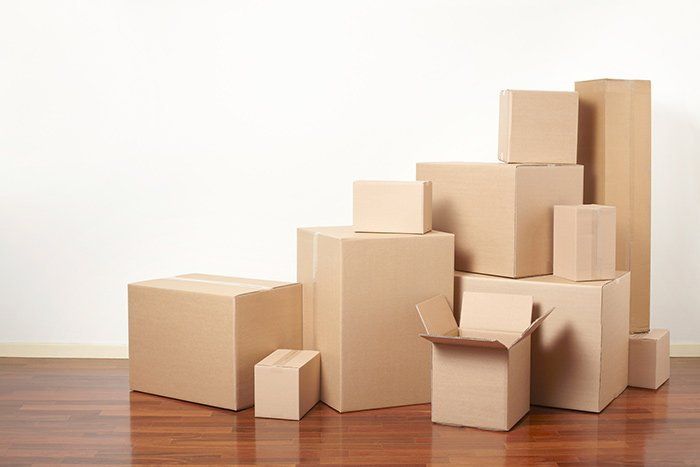A Guide to the Terms Used in the Corrugated Box Industry
Admin • August 23, 2019
Bale
A bale of boxes is much like a bale of hay. Bales are bundles of boxes held together, usually by plastic straps. When boxes are baled, they are unfolded so that they lie flat on each other. Bales may also be referred to as bundles.
Knowing how many boxes are in a bale may help you understand a box supplier's pricing structure. Suppliers don't like to split bales open, so the minimum order is usually equivalent to the number of boxes in a bale. Some suppliers offer quantity discounts for purchasing multiple bales at once.
Class Stamp
The class stamp is unique to corrugated boxes that are manufactured in the United States. This is a rectangular or round stamp that shows that the stamped box adheres to all applicable standards. The stamp is usually placed on the inside flap of a box. Sometimes class stamps are referred to as box manufacturer's certificates (BMCs) or cert stamps.
Not all cardboard boxes have class stamps because these are unique to boxes made in the U.S. Moreover, a box can lack a stamp and still meet all applicable standards. Nevertheless, seeing a stamp is a sign that the box you're looking at has been made in the U.S. and is a good-quality box.
Box Style
Box style refers to the configuration of a box — how it's cut. It has nothing to do with the size of a box. Boxes of different sizes can still be cut in the same shape, which means that they would all have the same style.
Box style numbers vary from supplier to supplier, but each supplier keeps their numbering system consistent. This can help you identify other boxes to look at if you've found one that you like the shape of, but it's too large or too small.
Cardboard
Cardboard has a technical definition, and the term is often misapplied by individuals outside of the paper and box industries. Cardboard is a thin and stiff paperboard that's typically used for signs, playing cards, poster boards, and other similar items. It's not used in corrugated boxes, which many people refer to as cardboard boxes.
Corrugated boxes are made of corrugated board, which is also known as corrugated fiberboard and containerboard. This is a fluted material that’s made of at least one flat layer and one zig-zagging layer. Most have two flat layers with the zig-zagging layer in between, but some boxes have only one flat side or are reinforced with another zig-zagging layer.
Both of these materials are different from fiberboard. Fiberboard is made from multiple layers of paperboard — slightly thinner than cardboard. It's often used in retail boxes that don't need to support much weight and are designed to catch shoppers' attention.
Knowing the difference between cardboard, corrugated board, and fiberboard will help you find the exact type of box that you're looking for. Sometimes, people who are unaware of these definitions have trouble finding the right box because they're looking under a different heading than they should be.
Panel
A panel is a single side of a box. Thus, traditional cube and rectangular boxes have six panels — four sides, a top, and a bottom. You'll be discussing different panels if you plan on having your boxes custom printed.
For help finding the perfect corrugated boxes
for your business, contact us at Capitol City Container Corp. for more information on our products and services.
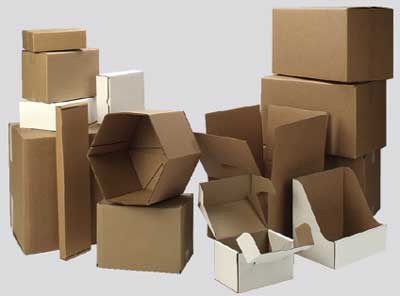
September 17, 2019
A basic brown box may work for shipping, but you may be losing money when you rely on general packaging. Customized die-cut corrugated boxes can ultimately save you on shipping costs because they are properly sized. Perfectly Designed to Fit your Products If you regularly mail similarly sized items, you can benefit from die-cut boxes. A standard carton is just that: standard. That means you can put a lot of different items into one of them, but you will usually have a lot of dead space to fill with foam peanuts or other packing materials. The cost of those fillers can add up quickly. A die-cut box can be made to fit snugly around your item, no matter the size or shape of it. As a result, you won’t need excess fillers. Also, a customized carton is made to fold up into a self-contained piece. This means less tape, glue and staples to keep your product secure. Easy Storage for Small Spaces Storing boxes can be a headache because they can take up needed space in your stockroom. However, die-cut boxes can be stored flat. Thus, a large stash won’t take up much room and you’ll have more area for other inventory. You can also save on storage inside your delivery trucks, as the custom boxes will take up less space than large ones. You can save your company money on shipping expenses and storage headaches by using custom die-cut corrugated boxes . To find out more about ordering some customized container today, call Capitol City Container Corp. at 317-875-0290 .
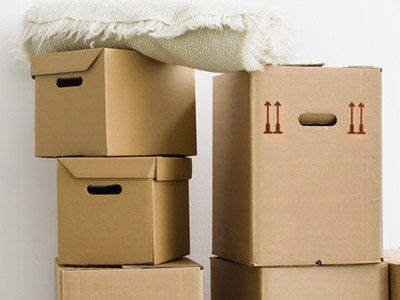
By Admin
•
September 15, 2019
There are many aspects of designing a new product: shape, size, material, color, special features, etc. One important factor you should remember is the packaging. When your customers start sending in orders, you need to already have the right corrugated box to ship your product. Here are a few things to consider when you choose which box to get. Types of Boxes Some of the box types available include: Regular slotted containers: standard style Full-overlap cartons: outer flaps reach all the way to the other side One-piece folders: flat style that folds around object Five-panel folders: extra panel for added protection Half-slotted containers: closed with a lid instead of flaps Tele-bottom/covers: assembled around object Product Qualities The box you get depends on the qualities of your product, such as its category, weight and size. If your object is heavy, a full-overlap carton provides the most strength. If your item is fragile and flat, such as a window or picture frame, the five-panel folder offers the best protection. If you have a large, oddly shaped object, such as a guitar, the tele-bottom gives the easiest assembly. All of these types come in various sizes, so it’s important to match the box to your product’s shape, weight and delicacy first. To learn more about how to choose the right corrugated box , contact Capitol City Container Corp. in Indianapolis.
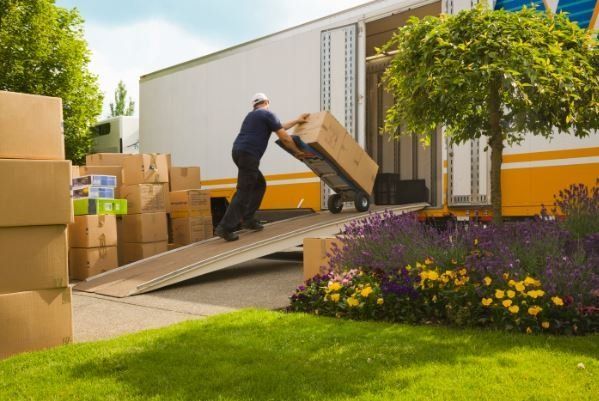
By Admin
•
September 13, 2019
If you ship a lot of products for your business, you are aware that good packaging is necessary to protect orders on their way to your customers. You probably spend a good deal of time and effort on the internal filler, but have you considered the significance of the box itself? Here are three reasons why you should you customize your boxes. Visibility Some companies are actually known for their containers because they have a distinct style, color, or company logo. If you stick with the usual brown or white corrugated box, you are missing out on a big branding opportunity. Putting the effort into a custom-designed package can stand out for your clients as a sign of the attention to detail that is part of your customer service experience. Connection Packaging can make or break a relationship with consumers. Custom boxes show you care about the impression you make, but it also allows your customers you feel they matter. Positive packaging experiences allow you to connect on another level beyond product selection, especially if your business focuses on e-commerce instead of in-person interactions. Recognition Customers who enjoy your custom boxes are likely to have a good impression of your company which, in turn, can bring you word-of-mouth attention and repeat business. Your reputation is about more than protecting what’s inside the box. Take advantage of another opportunity to market your business by customizing your shipping containers. For more information on how you can get custom boxes made for your company, contact Capital City Container Corp in Indianapolis at 317-875-0290 .

By Admin
•
September 9, 2019
When you have goods to ship, it may be the best to ship them in a container that fits the products you are shipping, minimize damages, and is inexpensive. That’s why corrugated boxes may be the best shipping solution. They are Customizable Corrugated boxes are not standardized. They come in a variety of: Board types Flute sizes Basis weights Adhesives Treatments and coatings This allows you to create an individualized shipping box. Corrugated boxes can also be cut and folded to fit unusual shapes. Protective Because corrugated boxes remain rigid while still providing cushion to your products, they decrease the odds of damages to heavy or fragile items. They are resistant to damages from impacts or vibrations and are specifically designed to withstand the pressure of shipping. Corrugated boxes also provide uniform weight distribution to prevent the goods from shifting as much as possible. Cost Effective The cost of the raw materials and labor used to make corrugated boxes is low and they are easily filled and moved which also helps to reduce the price of labor. Since you can put more goods in a corrugated box without risk of the box tearing or breaking, you can ship more things at a lower cost. Corrugated boxes have many other qualities that make them a fantastic option for shipping. Made almost entirely out of recycled material, they can be reused and recycled multiple times. To find out more about what corrugated boxes we carry, contact Capital City Container Corp in Indianapolis at 317-875-0290 .
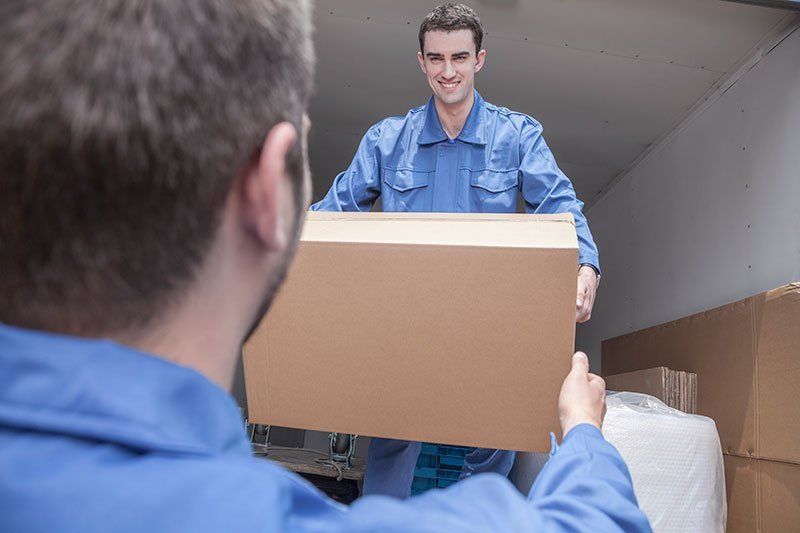
By Admin
•
September 7, 2019
The corrugated cardboard box is one of the pillars of our national economy. These containers are used to reduce inventory loss during shipping in the most efficient way possible. They're the first line of defense against the elements packages encounter. Efficiency Most of the reasons that corrugated boxes are great for shipping translate directly into benefits for storage. Their standardized sizes let you utilize your space to its maximum potential, saving money on warehousing. The cheap materials used in constructing these containers means that you can afford to organize as much as you want. Options Everyone from major warehouse corporations to studio apartment tenants can benefit from storing with corrugated cardboard. There's a range of option available from standard to super heavy duty and a range of sizes too. Each option you choose has those pockets of air locked into the walls that protect your items from knocks and dings. Hidden Benefits Corrugated cardboard has some less obvious benefits. For example, they're available worldwide. That means you can standardize your storage over great distances. They're so lightweight and low volume that you can keep an almost unlimited supply on hand to cope with surges in stock, or just keep them around for your next move. In conclusion, you don't need to be a major logistics company to get the most out of corrugated cardboard boxes. Contact Capital City Container Corps. in Indianapolis at 317-875-0290 , for an overview of all of the options available for these containers.
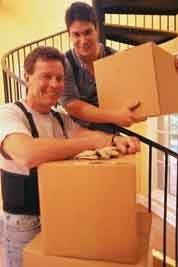
By Admin
•
September 5, 2019
Picking an appropriate shipping box will help ensure that your product arrives safely on your customer’s doorstep. Here are some options to consider when choosing a box type: 1. Corrugated Cardboard Sturdy and reliable, corrugated cardboard is a versatile choice. These durable boxes can be trusted with most kinds of products and are good at protecting delicate items. 2. Foam-Lined If you’re shipping something fragile, you’re going to need padding for protection in transit. Foam-lined boxes fit snugly around the product and are ideal for holding heavy, breakable objects. 3. Picture Box These flat boxes are designed for mirrors, artwork and other framed items. You may need to find one specially sized for your needs. 4. Wardrobe Box If you ship clothing, consider a wardrobe box. These containers have bars inside for hanging clothes, helping the products stay neatly packed. 5. Custom Box Last but certainly not the least, custom boxes are one of the best shipping options around. They can be designed to fit your item perfectly, and as an additional benefit, it can be given a recognizable design that customers will identify with your company. As you can see, there are many good options when it comes to picking boxes for shipping. Contact Capital City Container Corp. in Indianapolis at 317-875-0290 to learn more about how to pick the right shipping box for you.
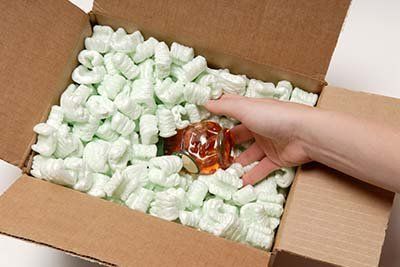
By Admin
•
September 3, 2019
With the holidays coming up, you may already be getting started with buying gifts for your loved ones. You may already be looking into shipping your gifts to your family and friends whom you won’t be able to see for the holidays. Making sure your presents reach their destination safely is important. Here are some tips. Get the Right Box The first step is to be sure you aren’t over packing the box. For a guide on what size of box to use for your item depending on the weight of the box, you can visit the shipping company’s website for a chart. Make sure you are using a fresh box , as a used box will already have some wear and tear and you don’t want to risk it getting damaged in transit before your gift arrives. Cushion Your Belongings Wrap each item individually with cushioning inside the box, and fill voids with more cushioning such as packing peanuts. The less the items can move, the better. You can gently shake the box to make sure nothing is moving in there. Use Quality Tape Lastly, make sure you are using pressure-sensitive tape, as low-quality tapes are more likely to become damaged in transit and open up. Contact Capital City Container Corp in Indianapolis at 317-875-0290 for more information on how to make your packages safe to ship.
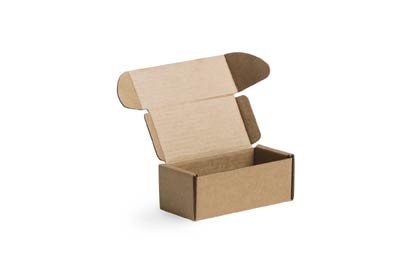
By Admin
•
September 1, 2019
In today’s world, businesses that can ship on the spot are valuable in an economy where almost anyone can access anything anywhere. To stay ahead of the curve, why not invest in custom created boxes to send packages? Die cut boxes are perfect for all shipping options. Laser Cut These boxes can be precisely to fit any size or shape of product. They can also be customized as not only tradition rectangles and squares, but other shapes. Product Protection Because they can custom cut to accommodate the size of any product, this eliminates the worry of items being tossed around in their storage containers. Cost Efficient Made of corrugated cardboard, the boxes are inexpensive to mass produce. Companies can order massive quantities at low cost. Easy to Store Because they arrive unassembled, die cut boxes are easy to store away, since they are flat. This is especially useful since they only need to be assembled on demand. Quick Assembly Die cut boxes can be put together by even the youngest of people. For companies, this is critical since any company that needs to complete mass mailings needs the ability to quickly put boxes together. Die cut boxes have many advantages for companies or anyone who needs shipping solutions. To get ahead of the shipping game, invest in die cut boxes. Contact Capital City Container Corp in Indianapolis at 317-875-0290 .

By Admin
•
August 31, 2019
Many packaging design companies use computer aided drafting tools to help with their creative and technical processes. That's because CAD helps smooth out workflows and increase productivity, especially when it comes to certain parts of the design process. Scaling The ability for a business to scale up is often dependent on the adaptability of its products and services when faced with new requests or clients. CAD as box design software allows the easiest possible rescaling and rebuilding of existing layouts. Being able to quickly change successful designs decreases risk and increases productivity. Box Design Templates Some organizations have access to POP display creation equipment such as a Kongsberg table but lack the internal design expertise to craft professional designs. In these cases, CAD is used alongside a downloadable library of premade layouts. With this combination, all that stands between any organization and almost any type of POP display is the ability to operate cutting equipment. Drafting Tools Box design with CAD gives expert designers the tools they need to succeed. From making two-dimensional layouts for folding corrugated boxes to presenting isometric displays of a finished product with curved surfaces, the advanced drafting and planning tools available with these applications make any project more efficient. There's a lot more that CAD can do, so check out some more information by calling Capital City Container Corp in Indianapolis at 317-875-0290.
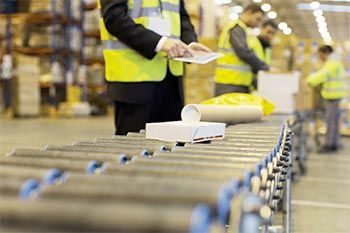
By Admin
•
August 29, 2019
About 80 percent of Americans shop online. While a large audience, the online marketplace is competitive as there are more than 100,000 e-commerce retailers. Success in this sector requires a business to stand out from the competition. High-quality product offerings are a start, but providing consumers with a better experience helps you sustain in the long-term. Learn what every online retailer should do to improve the consumer experience. Eliminate Account Registration As a retailer, you're on a constant quest for leads. When a consumer visits your website to place an order, requiring that they sign up for an account provides you with an opportunity to collect their data so that you can market to them in the future. However, this requirement could be the difference between a successful sale and the potential customer logging off the site. More than half of all people will abandon their shopping carts and find another retailer when they are forced to create an account to complete the transaction. If this is a site feature you have, consider forgoing this step. You can still require an email address that you can use to communicate with the consumer periodically. Never Underestimate Consumers don't like to be lied to, and when you underestimate shipping times, they feel like this is what you're doing. If it takes two days for your warehouse to process an order and the shipping company has given you a three-day delivery quote, don't give the customer a delivery quote of three days, as this doesn't include the processing time. The goal might be to make the customer feel better, but this underestimation only harms the brand. Consumers want on-time deliveries, and when they don't receive them, they have no problem walking away. In one market study, 29 percent of people said they would no longer conduct business with a retailer if their order were late, just once. Consumers would have a five-day delivery that arrived on schedule than a three-day delivery that was late. Design Custom Corrugated Packaging Custom corrugated packaging offers an excellent way to tailor to the needs of your products and customers. First, these boxes are made specifically for your products and goods. This level of customization keeps the contents of the shipments safer during the transport process and minimizes damage. Just as late shipments might turn a consumer off, damaged delivers may have the same effect because customers may blame you for any issues. If your current boxes are too large and the shipping company factors the dimension of the box into their fee, custom corrugated boxes may also help lower your costs. When you pass these savings down to the customer, this only further improves their experience. Capital City Container Corp. can design high-quality custom options to meet your shipping needs. Generate Product Reviews It's well known that consumers place the personal recommendations of others in high regard. In fact, 88 percent of consumers equate online reviews with personal recommendations, and if you add reviews to your website, you can increase your conversion rate by more than 30 percent because reviews give consumers greater confidence in your products. If you don't have a review feature, now is the time to add this option to your website. If you do have this feature but are having trouble getting reviews, consider creating an incentive program. For example, notify customers that they will receive $5 off or free shipping on their next order if they provide a review. To eliminate spam, you can also include a verified buyer feature that only allows customers who previously purchased the item to leave a review. The realm of online shopping is vast and competitive, but you can be successful. Apply these tips and continuously look for ways to improve the customer experience.
Contact Information
Phone:
(317) 875-0290
Toll Free: 800-233-5145
Fax: 317-876-6694
Email:
info@capcitycontainer.com
Address: 8240 Zionsville RD, Indianapolis, IN 46268
Business Hours:
- Mon - Fri
- -
- Sat - Sun
- Closed




Our Location
Content, including images, displayed on this website is protected by copyright laws. Downloading, republication, retransmission or reproduction of content on this website is strictly prohibited. Terms of Use
| Privacy Policy
